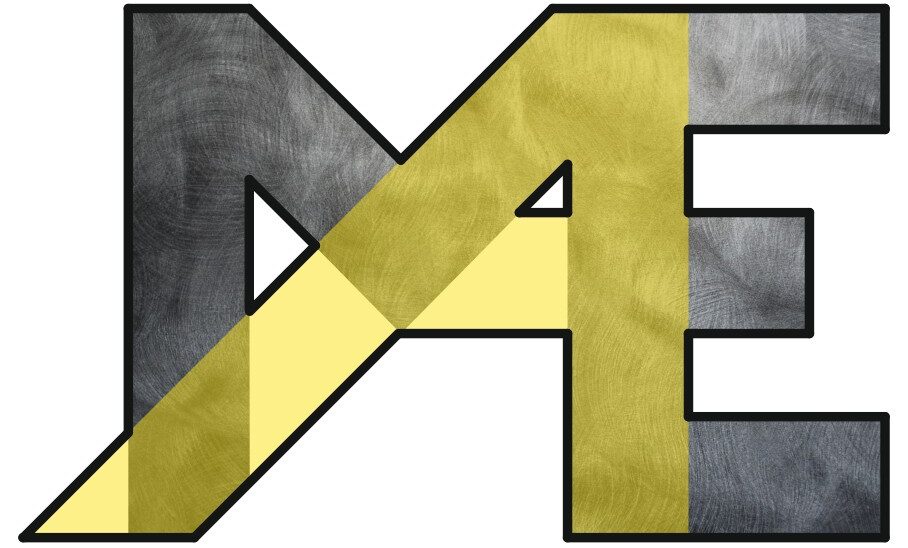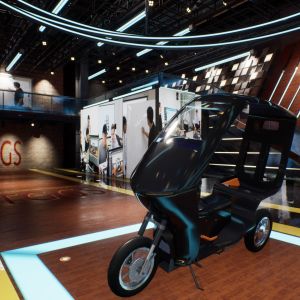Lab 6: Virtual Reality Applications in Product Innovation on July 28
Virtual Reality (VR) Systems are exciting to use, but they are also powerful tools that can be used to enhance product development, factory planning, technical training and other professional activities. Join our workshop to try TGGS’ powerful own VR system, to learn how computer-based design is integrated with VR and what it takes to set up a VR system.
Participation is free of charge, but seats are limited. Please reserve a seat by mail to alex.b@tggs.kmutnb.ac.th
Schedule
08:30 Registration
09:30 Alex Brezing: “VR Applications in Product Design and Design Engineering”
10:00 Alexander Dressler.: “VR Systems: Hardware, Software, System Installation”
10:45 Alexander Dressler.: “VR Modelling: Models and Scenes”
11:30 VR Demonstration and Experience
12:00 Lunch
13:00 Suranart Mali-Ong: “VR Technology for Product Design and Factory Design”
14:15 Paitaya Saengbangpla & Waranya Chaosukho: “Autodesk Fusion 360 – A Powerful Tool for Product Design”
15:15 VR Demonstration and Experience
16:30 End of Event
Invited speakers
Technical Sales Specialist
Design & Manufacturing Industry, ASEAN
Ms. Waranya Chaosukho
Product Designer and
Autodesk Fusion 360 Trainer.
Past events:
Lab 4: DIGITAL SCULPTING (styling/surface modelling) on September 26 (2018)
The design and engineering of complex, free-form surfaces is a process that starts with intuitive sketching, sometimes involves actual sculpting with clay and finally requires experts to realize a high-quality digital model that will satisfy the design intention, the aesthetic quality and technical requirements. The biggest challenge is the aesthetics of the reflected light, and this is a geometrical problem that is described in mathematical terms. Realizing such CAD-models requires a lot of experience, and few experts are willing to share this, which is also a reason why few educational programs in engineering cover this field.
The fourth design culture lab gives an overview of the overall process of designing Class-A (styling/freeform) objects like car-bodies and consumer goods, explains the scientific principles and gives an actual introduction on techniques of digital sculpting using the industry-standard CAD-software CREO.
Participants can bring their own laptop computers to actively follow the demonstrations and examples (afternoon) if they install the software first. Student versions are available on the homepage of PTC. Please install the version CREO 3.0 (newer versions are available on the website)!
Participation is free of charge, but seats are limited. Please reserve a seat by mail to alex.b@tggs.kmutnb.ac.th
Schedule
08:30 Registration
09:30 Alex Brezing: “Class-A design and modelling: workflows, methods, scientific background and examples”
12:00 Lunch
13:00 Practical demonstration of modelling examples on CREO 3.0, including
– reverse-modelling of scanned geometry
– techniques to realize curvature-continuous transitions
– analysis tools to check geometric quality
– case-study: the “Apple Round”
– case-study: High-Speed Train body
16:30 End of Event
Previous Labs
Lab 3: PRETTY THINGS AND LOVELY PLACES (product design and architecture) on September 12
Objects like consumer goods, vehicles and buildings are part of our environment. They reflect contemporary culture and even influence it; they have an impact on our lifestyle, behavior and self-esteem – ideally, with only positive effects and without us even noticing it. Good design is aware of the users’ needs and the variety of their lifestyles and understands how to address these with new products or the places that are to be designed.
The processes that lead to successful designs differ depending on the relationship of the future user and the object. Consumer goods, personally owned vehicles and private buildings must address specific market segments in order to be successful. Public places and services as well as the objects that are designed for them must satisfy all potential users, represent the institution or community that owns them and harmonize with the given environment.
The third design culture lab continues our exploration away from the pure “engineering of rational tasks” into the “meaning of things” and the professional processes that deal with emotional and socio-cultural relations between users, objects, producers and designers. In the morning session, there will be an introduction to the methodology of product design with the focus on market segmentation and user experience design. With the guest speakers in the afternoon, we represent two opposite professional viewpoints: designing spaces for global customers (architecture) on the one hand and designing lifestyle/mobility (motorbikes) specifically for the Thai market on the other.
Participation is free of charge, but seats are limited. Please reserve a seat by mail to alex.b@tggs.kmutnb.ac.th
Schedule
08:30 Registration
09:30 Alex Brezing: “The Methodology of Designing User Experiences (and their objects)”
12:00 Lunch
13:00 Pollajak Leelayuvat: “Making Places Around the World – insights into industry-leading architecture”
14:30 Coffee break
14:45 Bundit Boonkerd and Sorawit Auenopsawat “GPX Racing – Performance and Lifestyle for Thailand”
16:30 End of Event
The speakers
Mr. POLLAJAK LEELAYUVAT holds 4 degrees from the USA and Thailand and looks back on 20 years of professional experience in both countries, including positions as furniture builder, designer/fabricator, architect, studio manager and most lately associate director of the Bangkok office of a world-renowned company in global planning and architecture, Chapman Taylor. Projects range from show-rooms and shopping-complexes to resorts and residences and include clients as diverse as IKEA and Harley-Davidson.
 Mr. BUNDIT BOONKERD and Mr. SORAWIT AUENOPSAWAT are the GPX designers responsible for the latest exciting range of motorbikes of the all-Thai brand. They hold degrees of Rajamangala University of Technology Thanyaburi and King Mongkut’s Institute of Technology Ladkrabang respectively.
Mr. BUNDIT BOONKERD and Mr. SORAWIT AUENOPSAWAT are the GPX designers responsible for the latest exciting range of motorbikes of the all-Thai brand. They hold degrees of Rajamangala University of Technology Thanyaburi and King Mongkut’s Institute of Technology Ladkrabang respectively.
http://www.gpxthailand.com/
Lab 2: INNOVATION CULTIVATED (design methodology) on August 29
Design is the activity in the value chain that poses the highest risk of failure due to technical uncertainties, lacking knowledge and wrongly assessed customer preferences. Design also is the most important prerequisite to ensure the future of any production-based business.
Economies that have realized the importance of design have invested in the development of design education and research. Most major Universities in Germany have established designated Chairs for Design Methodology in the 1970s. China and South Korea have more recently funded the development of their design-focused education.
The second design culture lab gives insights into the systematic and theory-based approaches of both design domains that serve the producing industries, “Engineering Design” and “Industrial Design”. After this overview in the morning session, two practitioners, representing both domains but one international design service provider, will report on current trends in the industries.
The event invites interested students, academics and professionals and encourages questions and an exchange of experience and opinions.
Participation is free of charge, but seats are limited. Please reserve a seat by mail to alex.b@tggs.kmutnb.ac.th
Schedule
08:30 Registration
09:30 Dr.-Ing. Alex Brezing: Introduction to the methodology of Design Engineering and Product Design
12:00 Lunch
13:00 Mr. Patiyan Saksit and Mr. Dhanakorn Ocharoenchai, DETEKT:
– “Product Design for a Globalized Market”, part 1
14:30 Coffee break
14:45 Mr. Patiyan Saksit and Mr. Dhanakorn Ocharoenchai, DETEKT:
– “Product Design for a Globalized Market”, part 2
16:30 End of Event
The speakers
 Mr. Patiyan Saksit
Mr. Patiyan Saksit
Product Development Engineer
Mr. Dhanakorn Ocharoenchai
Industrial Designer
DETEKT – Product Design, Engineering Development & Prototyping
Lab 1: GOOD VIBRATIONS (musical instrument physics) on August 22
Music is one of the oldest forms of human culture, and it is still evolving and an important part of most people’s lives. The evolution of music has been driven by technical developments and the improvement of musical instruments. Our musical system is governed by physics and math, but also by man-made conventions.
Musical sound is caused by the vibration of solid bodies and air columns. Engineering sciences provide advanced tools to explore, understand and even simulate vibrations. So, engineering knowledge can be used to understand musical sound, but musical sound can also be used to explain principles of vibration engineering.
In the first design culture lab, we explore the interface between these two worlds to enhance understanding and enjoyment of both. We will first demonstrate a substantial collection of instruments, mostly saxophones and clarinets, and explain the rules and principles of the musical language. In the second part of the lab, we will use most modern equipment to analyze musical sound and compare different instruments. Finally, we will apply principles to the design a simple woodwind instrument.
Participation is free of charge, but seats are limited. Please reserve a seat by mail to alex.b@tggs.kmutnb.ac.th
Schedule
08:30 Registration
09:30 Dr.-Ing. Alex Brezing: Introduction and demonstrations of instruments
– Classification of wind instruments; pitch modulation and vibration excitation
– The historic development of modern woodwind instruments
– Musical voices at the example of the saxophone family
– Sound differences between saxophones and clarinets
– The modern musical and pitch tuning system
– The overtone series
12:00 Lunch
13:00 Dr. Khemapat Tontiwattanakul: Comments on vibration and acoustic engineering
– Introduction to vibration engineering and modal analysis
– Explanation of employed instruments, software and algorithms
– Guitar string: modal analysis, frequency analysis, playing the overtone series
14:30 Coffee break
14:45 Dr. Khemapat & Dr. Alex: Interactive demonstrations, measurements and discussions
– Open and closed cylindrical tubes
– Frequency analysis comparing the clarinet and the saxophone; physical explanations
– “Good tone versus bad tone”: Frequency analysis and discussion
– “Full spectrum versus overtone series”: Frequency analysis and discussion
16:30 End of Event
The speakers

Dr.-Ing. Alex Brezing is lecturer and researcher in the field of Design Methodology, coordinator of the MESD graduate program at TGGS, design evangelist and saxophone enthusiast. He has been collecting, repairing and customizing saxophones for almost 20 years. The oldest saxophone in his collection is celebrating its 100th birthday this year.
 Dr. Khemapat Tontiwattanakul is lecturer and researcher in the field of mechanical vibrations at the Faculty of Engineering at KMUTNB. In his spare time, he applies his knowledge to the electric guitar, preferring Les Paul-type instruments. He is very good with modern audio equipment and software.
Dr. Khemapat Tontiwattanakul is lecturer and researcher in the field of mechanical vibrations at the Faculty of Engineering at KMUTNB. In his spare time, he applies his knowledge to the electric guitar, preferring Les Paul-type instruments. He is very good with modern audio equipment and software.











